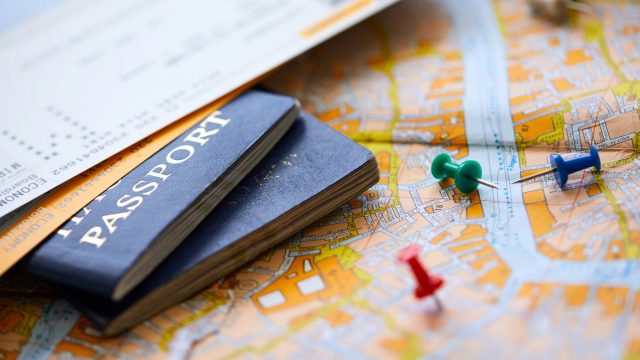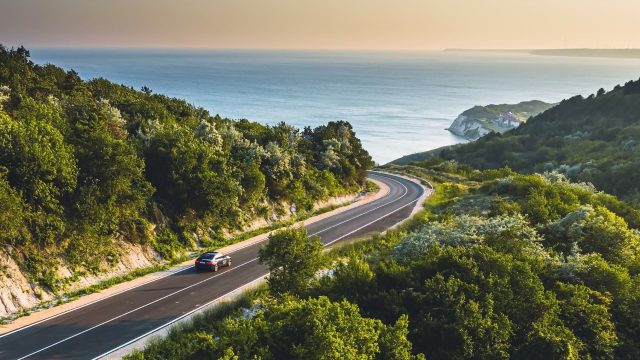If you’re an avid hiker, then no doubt taking a trip to New Zealand is on your bucket list. There are nine Great Walks showcasing some of the most breath-taking views that the country is renowned for. Before hiking in New Zealand, park up your hire car and access some unforgettable sights.
These walks are well-formed and maintained by the Department of Conservation (DOC), which protects the natural beauty of the area. Use the DOC to book ahead for these walks as access is restricted, regulated and monitored.
Some of the routes are circular, which means that they begin and end at the same point. Others are one-way only. Pre-arrange transportation on one-way hikes because the tracks vary in difficulty levels and amount of time required differs. If you’re planning to walk in wintry conditions, a higher level of experience is necessary. You’ll also need knowledge of specialist equipment. A guide is available on certain tracks and these operators will also provide you with all the necessary equipment. Find out more about these services through the DOC website.
Now, it’s time to prepare for your hiking trip, or ‘tramping’ as it’s known!
 Photo by: Klaas Hartmann/Fotolia
Photo by: Klaas Hartmann/Fotolia
Accommodation
Nearly 1000 chalets have been built along the Great Walks. Stay in a hut if camping doesn’t float your boat. You’ll have to pay a small nightly fee and booking in advance on the DOC website is a must.
Prepare to share facilities with up to 60 people which means packing ear plugs and an eye mask is a must. People come and go all the time and without these, you may struggle to sleep. You’ll also find campsites located throughout the walks which charge an overnight fee. Nab a place on one of these sites, again you’ll have to book through the DOC website.
Thinking about supplies, some tour operators provide camping equipment such as tents and sleeping bags as part of their packages. Prepare to carry them with you though. Be aware that both huts and campsites only allow stays of one night per person to regulate demand. Camping outside campsites along some of the walks is prohibited, so check before you leave. You must pay when booking through the DOC website.
If you plan to stay in multiple huts, you should consider investing in a Backcountry Hut Pass. Pay for the pass and then show it when staying in a hut. You can save money as the cost of the pass can be cheaper than paying for accommodation each time you stay.
Hiking in New Zealand
 Lake Waikaremoana Photo by: Jiri Foltyn/Fotolia
Lake Waikaremoana Photo by: Jiri Foltyn/Fotolia
South Island
Explore Rakiura Track on Stewart Island where you’ll walk through open coastline and leafy forests. Maori Beach which is part of the track, was once popular for milling. Here you can see the remains of the activity. The track is rich in wildlife thus proves popular with birdwatchers. Spot mutton birds, cape pigeons, and korora (small blue penguins) on your travels.
The Kepler Track takes you over grasslands and mountain ridges. In winter, snow covers the track and it’s also prone to avalanches. Explore Lake Te Anau and the stunning surrounding panoramas. Out of season, only tackle this route if you are an experienced hiker.
Head over to Milford Sound, Mackinnon Pass, Sutherland Falls and Clinton River, all of which are on the Milford Track. Witness a variety of natural beauties from waterfalls to glacier-carved passes. Plan to spend at least 4 days trekking this 53km one-way route.
The Routeburn Track includes sights from the Fiordland National Park and Mount Aspiring National Park. Meander with the Route Burn River and visit Routeburn Falls. You’ll witness some of the most stunning mountain vistas available. Outside of hiking season, there is a risk of flood and avalanche so experience is necessary, particularly when using an ice axe and crampons.
North Island
Embark on the Lake Waikaremoana walk and you will traverse ridgelines and forests, making for some stunning views. View the incredible Korokoro Falls and take a dip in the lake. Listen for the call of the kiwi and sleep lakeside. See if you can spot the North Island robin or at night, the morepork. Plan to spend at least 3 days walking this 46km one-way route. Part of the track may cross private land, some of which is considered sacred, so stick to the path where signs indicate.
Tongariro Northern Circuit is an active volcano zone, with eruptions as recent as 2012. Get up close to lava formations and explore volcanic landscapes, pass around crystal blue lakes and sweeping glacial valleys. Look out for a range of native birds, such as pipits, skylarks and falcons. There’s an avalanche risk, therefore hiking experience is recommended. Set aside at least 3 days for the loop of 43km. Seasonal restrictions apply so check before you travel.
Looking for an alternative to exploring on foot? Why not canoe or kayak the Whanganui Journey. It can take up to 5 days, depending on your method of travel. Float down the river and experience the excitement of rapids in several locations. Make sure that you avoid Tamatea’s Cave along the route as it’s a wahi tapu (sacred place). Visit the Tieke Kainga Hut- the only hut used as a marae (meeting place for Maori people).
Feel the sand beneath your toes and tackle the 60km Abel Tasman Coast Track. Don’t stick to the route 100% though. Make the odd side trip to experience Cascade Falls and Cleopatra’s Pool. Both are great spots for a dip to cool off. You can download a free app about the Abel Tasman National Park which provides helpful information such as up-to-date weather and tidal details.
If you’re into biking, the Heaphy Track is a great choice. Walking it will take 4-6 days depending on the conditions, whereas biking only takes 2-3 days. Stop at Cave Brook and see the pole where many hikers have tied up their old boots. Be aware that Mackay Downs contains a bridge which in wet conditions can be dangerous and even flood, so check the conditions before leaving. Cross Heaphy River on the longest suspension bridge built by the DOC.
 Sunrise over Lake Tu Anau from Luxmore Hut on the Kepler Track Photo by: naruedom/Fotolia
Sunrise over Lake Tu Anau from Luxmore Hut on the Kepler Track Photo by: naruedom/Fotolia
Planning your trip
Land and collect your hire car from Dunedin Airport to experience the walks that the South Island of New Zealand has to offer. Access Rakiura Track on Stewart Island by ferry from Bluff. Alternatively, you can fly to the island from Invercargill.
Landing at Dunedin gives you access to the other Great Walks on the South Island- Kepler Track, Milford Track and Routeburn Track.
To access Heaphy Track and Abel Tasman Coast Track, you may find it easier to collect your hire car from Wellington Airport on the North Island and getting the Interislander ferry across to Picton. You can also drive from Wellington to head to the Whanganui Journey, Tongariro and Lake Waikaremoana tracks.
With so many to choose from, chances are you probably won’t tackle the whole lot in the same trip. We love the Milford Track for the range of views on offer; from lush forests and the dramatic Sutherland Falls to grassy mountains. Check the routes that each track follows and decide which you want to walk. Be realistic about your hiking experience, the time you have available and any limitations that may be set by the time of your visit. Use the track categories set by the DOC to help in your decision-making.
Be prepared
Organise plenty of supplies before you go hiking in New Zealand. Take plenty of water and food that will provide enough calories and nutrients to keep you sustained on your walk.
Pre-arrange transportation if walking a one-way route to get you back to your starting point. This may be a taxi, mini-bus or boat depending on the route. Some operators may require proof of
hut bookings.
You must always take rubbish with you, so bear this in mind when packing. Most huts have rain water barrels, but we recommend boiling or sterilising this before consumption. Last but not least, don’t forget to take toilet paper with you.
 Tongariro National Park Photo by: PhotoImage/Fotolia
Tongariro National Park Photo by: PhotoImage/Fotolia
Before you set out, make sure that you check the route conditions, as some are prone to flooding or avalanches. Be careful as certain bridges are also removed by the DOC during off-season.
Be aware of the emergency services number for New Zealand- 111. Ensure that you take an emergency radio beacon with you as mobile signal is non-existent on several routes.
If staying at a hut, be sure to sign the guest book. That way, in the event of an emergency, people will know where your last recorded checkpoint was.
Don’t attempt long-distance walks that require a degree of experience.
Which of New Zealand’s Great Walks will be your favourite?
New Zealand truly is a beautiful place to visit and has so many natural sights to see. Explore one (or more!) of the Great Walks to get access to stunning views.
Have you already hiked one of the Great Walks? We’d love to see your favourite photos on Twitter and Facebook so share them with us!
Make sure you follow us on Twitter and Facebook for the latest travel tips and news. Remember to sign up to our newsletter below for the latest deals.
Subscribe to our newsletter
Want our blogs emailed direct to you? Sign up below to get updates featuring our blogs and car hire top tips. Receive the best deals on car hire straight to your inbox.
Written by Jessica Juby.





